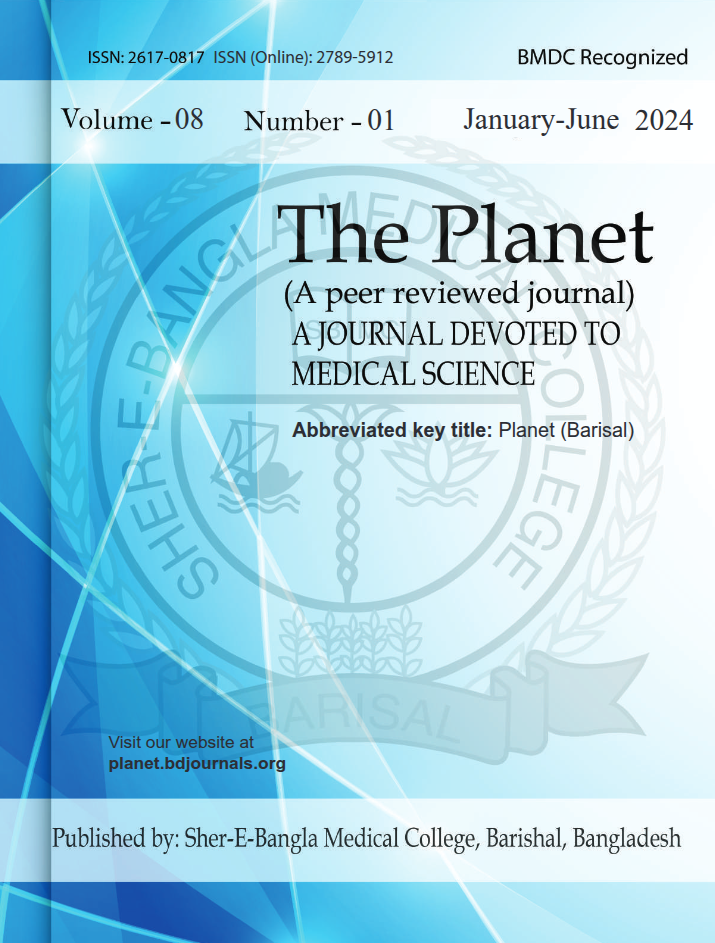Comparative Assessment of Neck and Waist Circumference as Predictors of Coronary Artery Disease Severity in Bangladesh
Published 28-12-2024
Keywords
- Coronary artery disease,
- neck circumference,
- waist circumference,
- anthropometry,
- cardiovascular risk predictors
Copyright (c) 2024 The Planet

This work is licensed under a Creative Commons Attribution 4.0 International License.
How to Cite
Abstract
Introduction: Coronary artery disease (CAD) remains a major public health concern in Bangladesh, necessitating the identification of reliable and easily measurable predictors of disease severity. While waist circumference (WC) is a well-established anthropometric marker for cardiovascular risk, emerging evidence suggests that neck circumference (NC) may also be a significant predictor. This study aims to compare NC and WC as predictors of CAD severity in a Bangladeshi population. Methods & Material: This cross-sectional study was conducted at the Department of Cardiology, Dhaka Medical College, from May 2013 to April 2014. A total of 100 patients with angiographically confirmed CAD were included. Anthropometric measurements, including NC and WC, were recorded using standardized protocols. CAD severity was classified as mild, moderate, or severe based on angiographic findings. Correlation analysis and multivariable logistic regression were performed to assess the predictive ability of NC and WC. Receiver operating characteristic (ROC) curve analysis was conducted to determine the diagnostic accuracy of both measurements. Results: NC and WC were significantly higher in patients with severe CAD compared to those with mild or moderate disease (p<0.001). Both NC (r=0.62) and WC (r=0.68) showed strong positive correlations with CAD severity. In multivariable logistic regression, per cm increase in NC (adjusted OR: 1.45, 95% CI: 1.22–1.73, p<0.001) and WC (adjusted OR: 1.52, 95% CI: 1.29–1.81, p<0.001) were independently associated with increased CAD severity. ROC analysis revealed that WC (AUC = 0.82, cut-off ≥98 cm) had superior predictive performance compared to NC (AUC = 0.76, cut-off ≥39 cm). Conclusion: Both NC and WC are significant predictors of CAD severity in the Bangladeshi population. However, WC demonstrated a slightly stronger predictive ability. These findings suggest that NC could serve as a complementary, non-invasive screening tool in clinical settings, particularly when WC measurements are impractical.



